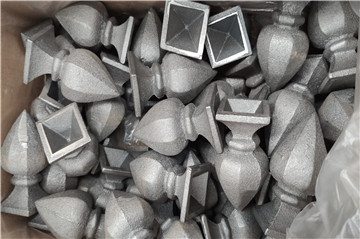What is the difference between cast iron and wrought iron?
Views: 490 Update date: Jan 22,2024
Cast iron and wrought iron are two distinct types of iron alloys with different properties and production methods. Here are the main differences between cast iron and wrought iron:
Production Method:
Cast Iron: Produced by melting iron and pouring it into molds. This process allows for the creation of complex shapes and intricate designs.
Wrought Iron: Produced by heating iron ore in a furnace with charcoal or coke. This process involves repeated heating and hammering to remove impurities and create a fibrous structure.
Carbon Content:
Cast Iron: Contains a higher carbon content, typically between 2% to 4%. This high carbon content makes cast iron more brittle.
Wrought Iron: Has a lower carbon content, usually less than 0.08%. The lower carbon content makes
wrought iron more malleable and ductile.
Strength and Hardness:
Cast Iron: Generally more brittle and less malleable. It is strong in compression but can be prone to breakage under tension.
Wrought Iron: More malleable and ductile, making it suitable for forging and shaping. It is less brittle and can withstand tension better than cast iron.

Uses:
Cast Iron: Commonly used for items like cookware, pipes, and certain architectural elements where its ability to hold intricate shapes is advantageous.
Wrought Iron: Historically used for wrought iron gates, railings, and decorative elements due to its malleability and ability to be forged into intricate designs.
Appearance:
Cast Iron: Has a rough and textured surface. Cast iron items often have a more detailed and ornate appearance due to the molding process.
Wrought Iron: Has a smoother surface and a more uniform appearance. Wrought iron items are often characterized by their simpler and elegant designs.
Weight:
Cast Iron: Generally heavier than wrought iron due to its higher density.
Wrought Iron: Lighter in comparison, making it easier to work with in terms of forging and shaping.
Both cast iron and wrought iron have been historically significant in various industries and applications, each with its own set of advantages and disadvantages. The choice between them depends on the specific requirements of the intended use.
Prev News: What are the parts of a wrought iron fence called?
Next News: What are the ingredients in wrought iron?
